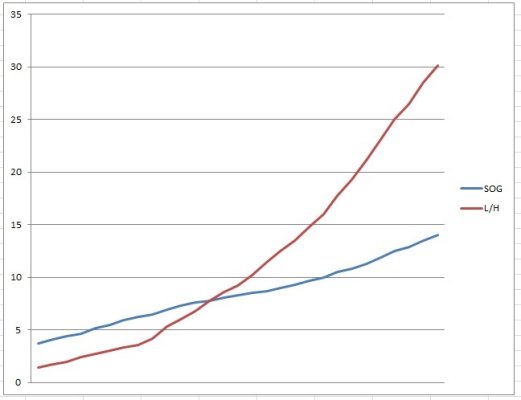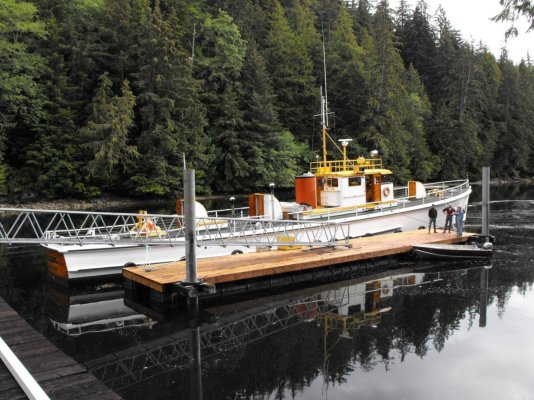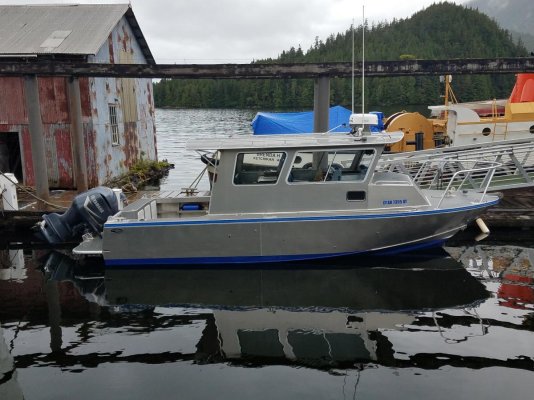Camano 31: The modified displacement hull with “Keel-Form” features, wide keel, engine set low, and hard chines for planning, has the potential to hurry up for pressing needs, but is far more efficient at and below “hull speed”. Technically that is 1.35 x the square root of the waterline length in salt water, 1.25x in fresh water. For the Camano that is theoretically 7.01 kt, or 8.07 mph. But, in practicality, it works like this (per my flo-scan readings in flat water conditions, minimal tide or current. NO - Not Observable) BTW, idles at 650, but smoother idle is 850:
RPM Kt (SOG) GPH Statute mph N. miles/gal Stat MPG
Idle 850 3.3 NO 3.8
1,000 4.2 NO 4.8
1,200 4.8 slight 5.5
1,400 5.4 .4 6.2 13.5 15.5
1,600 6.0 .7 7.0 8.6 9.9
1,800 6.5 1.2 7.5 5.4 6.2
2,000 6.8 1.5 7.8 4.5 5.2
2,200 7.0 1.9 8.1 3.7 4.3
2,400 7.3 2.7 8.4 2.7 3.1
3,800 WOT 14.5 8.0+
SOG – Speed over the ground. At WOT (wide open throttle) of 3,800 RPM the numbers are 14.5 kt and around 8 GPH. All readings included app. Est. 1,325 pounds people, fuel and water on board. Heavier loads, wind, waves, cleanliness of the hull, and tides and currents change these numbers greatly. Fuel usage pushing a little over hull speed might be 20g/day or less on a well-planned, more leisurely trip. Most days a few minutes above 3,000 RPM are used to cleanse fuel lines, injectors, exhaust, etc. I rarely run 10 hours a day over an average rpm of 2,400, 2,100 average is more common. Specs: 31’ LOA, 10’ 3” beam, 10,000 pounds displacement, 3’3” draft, 200 hp Volvo 6 cyl. Turbo Diesel, max RPM 3,900, 2.4:1 transmission.
Other fuel burn tables including a comparison with and without trim tabs is on the Pacific Camano Owners' website.
But, here is the simple truth: While range is an important consideration of fuel burn, you can burn a little more and "pay" for it by anchoring out instead of docking at a marina. I believe in being kind to our environment by buying a Trawler and staying close to or under hull speed, but you can enjoy the water within or slightly above hull speed and anchoring more of the time. Besides, as Steve Zimmermann noted in a Passagemaker article around a year ago, in terms of engine life, it's the revs and % of rated effort thatdetermines engine life. So, using our trawlers as they were designed has many advantages. Plus, the world, especially Trawler Heaven North Carolina is even more beautiful within hull speed.




 Very true, but its one aspect of ownership that we can control a bit by boat selection and how the boat is run so its not as fixed as the marina bill.
Very true, but its one aspect of ownership that we can control a bit by boat selection and how the boat is run so its not as fixed as the marina bill.